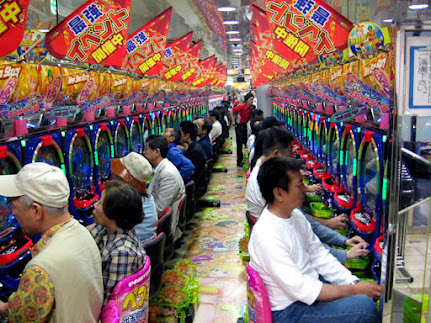How To Run Pachinko Parlors in Japan
Japanese culture is well-known for its love of gaming and entertainment, with the likes of Bandai Namco, Nintendo, Konami, Capcom, and Sony being major names on the global scene. However, The Land of the Rising Sun has kept one of its most popular forms of gaming to itself: pachinko. Across Japan, gamblers swarm to pachinko parlours to play the vertical pinball-type game. Annually, more is wagered on pachinko in Japan than the combined revenues of gambling super-hubs Las Vegas, Singapore, and Macau.
So, what is pachinko, how has it become so popular,?
Over the last six decades, pachinko has become an integral part of Japanese culture and Japanese leisure. With approximately nine million players in 2016, pachinko is one of the most popular forms of entertainment in Japan. The ¥21 trillion JPY pachinko industry employs over 240,000 people and accounts for nearly a third of Japan’s entertainment and leisure market. In other words, pachinko is one of the most popular forms of entertainment in Japan. 파칭코사이트
People spend their free time in any number of ways, refreshing, relaxing, or even studying for self-improvement. The leisure industry in Japan has undergone significant development in trying to meet these needs. Among these forms of leisure, pachinko falls in the same category as video games, karaoke, lottery, dining out, and bicycle or horse races.
It sounds elaborate for a game, but pachinko is both big business and a national obsession – there are more than 12,500 pachinko halls in Japan, some with slot machines, which together make four times as much profit as all the rest of the world’s legal casino gambling combined. The game itself generates 30 trillion yen profit a year for the pachinko companies.
Is the game addictive?
Pachinko presented itself as a way to win money in the absence of other legal ways to gamble. Today, there are 7.8 million players in the archipelago. This means 6.2% of the population or 1 out of 16 Japanese citizens.
Most players are veterans of the game, playing it for decades, often daily. Some even make a living out of it. They analyze the different patterns and line up in the morning to get the machine that they believe works best.
슬롯머신 To many, Pachinko isn’t just a game. In fact, some might say that the industry survives on the addiction it procures its players. It accounted for nearly half of the country’s leisure activities in 2016, despite its small player base.
In the 1990s, mothers holding their baby on one lap and playing the game with the other was a common sight. Some children even died suffocating the car while waiting for their mother.
Some believe pachinko would have never grown that much had casinos not been banned. I disagree. Pachinko didn’t start as a gambling method. It started as a simple game in candy stores.
Is Pachinko Legal in Japan?
Given that gambling is in fact illegal in Japan, it’s quite curious that pachinko is the country’s rare exception to the rule. Pachinko is legal in Japan thanks to an interesting loophole in the law that has enabled this popular pastime to endure despite its many gambling elements.
Korean Japanese dominate the Pachinko Industry
Nearly half of all leisure time in Japan is spent in pachinko parlours, and the industry hires more people than the country’s top 10 car manufacturers.
One of the biggest corporate operators is Dynam, which runs 400 halls around the country that are promoted as being cleaner and quieter than traditional parlours.
“The reason that the Koreans ended up in Pachinko parlours is because they weren’t able to get jobs anywhere else, so it became a place of employment, a safe haven for people who could not achieve regular goals like being a postal worker, or being a truck driver, or being a teacher,” said Lee, adding that many Korean women ended up working in Korean barbeque restaurants. “Women go into food services, men go into gambling. And then, generationally, they become very important in this world.” 바카라사이트
But parlours are largely run by Korean Japanese people, who pioneered the industry after the end of World War II. During colonial rule, many Koreans had sought employment or were forced laborers in Japan, and hundreds of thousands faced isolating discrimination when the war ended.



Mga Komento
Mag-post ng isang Komento